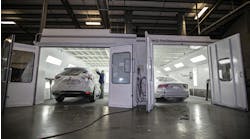We all agree that there is a severe shortage of competent technicians within the industry, and many shop owners tell me that when they see one in or lost one to another industry, they cannot compete on technician wage levels other industries are prepared to pay. I’m very concerned management just shoots that statement out without any justification or backing it up with the mathematical facts.
I respectfully disagree with management when they are bringing an emotional response to the table and not business facts.
Do the math.
It is not all about you and what you pay hourly. It is all about how many hours per day the technician gets billed. A $25 per hour technician who works 40 hours a week is paid $1,000 gross per week ($25 x 40 hours). Let’s say the shop charges a door rate of $100 per hour and this technician is billed out for an average of 5.3 hours per day at that $100 per hour. That means he or she generates $530 per day times five days a week, which equals $2,650 in billed labor per week. The technician being billed at that level contributes $1,650 gross profit per week to the business ($2,650 - $1,000) or based on working 50 weeks a year, $82,500 gross profit per year contribution to the shop after he/she is paid.
Now let’s examine a really competent technician who is commanding a $39 per hour wage and, based on a 40-hour week, a weekly salary of $1,560. One who is uninformed immediately would say it can’t be done. Stop and think. Do the math. It is not what he or she is getting paid per hour, it is all about how many hours per day they are being billed out. If this technician is that good and consistently is being billed out eight hours a day at $100 per hour, he or she would produce $800 per day or $4,000 in billed labor per week ($100 x 40) This technician contributes $2,440 gross profit per week to the business ($4,000 - $1,560) or based on the same 50 weeks per year will generate $122,000 gross profit contribution per year to the shop after he or she is paid. That’s an additional $39,500 contribution to the shop ($122,000 - $82,500) the higher paid tech contributes than the lower paid, less productive technician.
As you can see, it isn’t always just about the labor rate being charged to the client. You must have the right labor rate based on the competency of the technician and support staff. It is about the productivity rate of the shop.
The issue is not the hourly wage; the issue is how many hours is the technician being billed per day. This should be a pre-requisite question to the technician before you hire them. “How many hours are you billed on average per day?” I would be very concerned if the technician does not know that answer, because today we are in the knowledge business, the billed hour business.
A competent licensed technician should be producing a minimum of 10 to 12 billable hours per day, while an apprentice technician should be producing a minimum of four to six billable hours per day. If the shop is not at that level, then a full review of the shop processes coupled with an “inventory” of the staff competencies must take place. Is further training required? Are our internal processes conducive to creating the right productivity? Do we have the right client base? A shop that works on general consumer vehicles should average two to 2.5 billed hours per invoice/repair order. If the shop is averaging below two billed hours per invoice/repair order, then the shop has a definite internal process problem.
Now if the shop does not have the work to keep the technician busy and billable all day, don’t blame the technician. That is strictly an internal process problem as to how the shop goes about its business with its clients which is another topic all together.
It’s Not Just the Techs
You also must evaluate front counter staff. A competent professional service advisor who knows how to communicate clearly to educate the client and build a secure and trustworthy relationship is worth so much more to the shop than a service advisor who simply sells the flavor of the day or the seasonal special as instructed by management. The consumer is not stupid; the consumer is uninformed. A professional service advisor today clearly understands that and knows how to engage in a proper conversation with the client based on the client’s actual parameters to secure a long-term profitable relationship with the shop.
One final note is that you must develop shop culture that embraces two points and they are non-negotiable:
1. A strong work ethic is required to work in this shop.
2. You have a strong desire to compete.
Showing up every day with the attitude that we are going to get it done today and we are going to do it right, providing a great experience for our clients, because we can beat the dealerships. We are the independent sector and we are good. Imagine how many hours your competent people could bill if the entire team was that focused.
Slow down and learn the math of your business because perception of what you can do and afford can be way off base as compared to the reality of the actual situation.
Subscribe to Motor Age and receive articles like this every month…absolutely free. Click here



